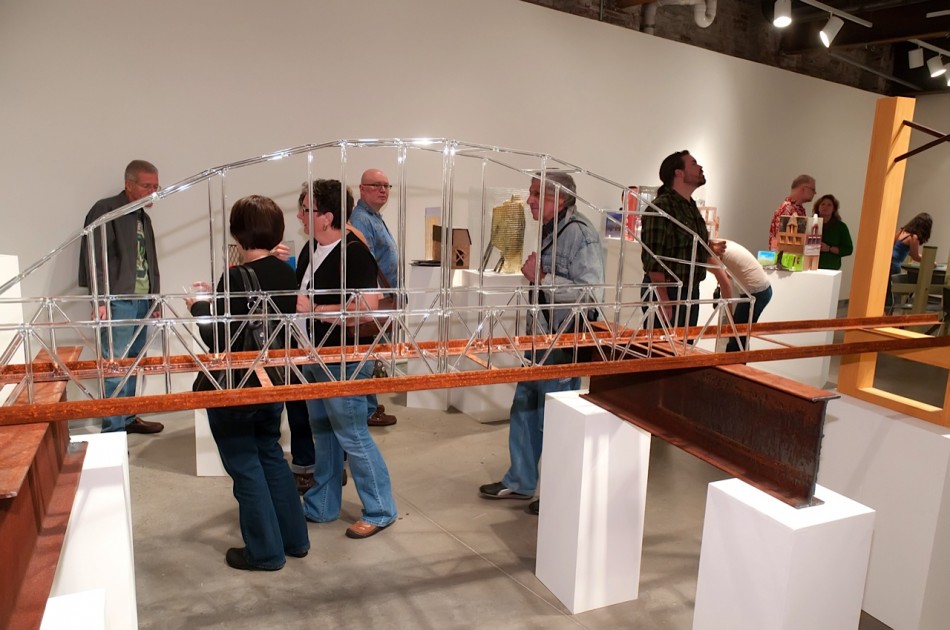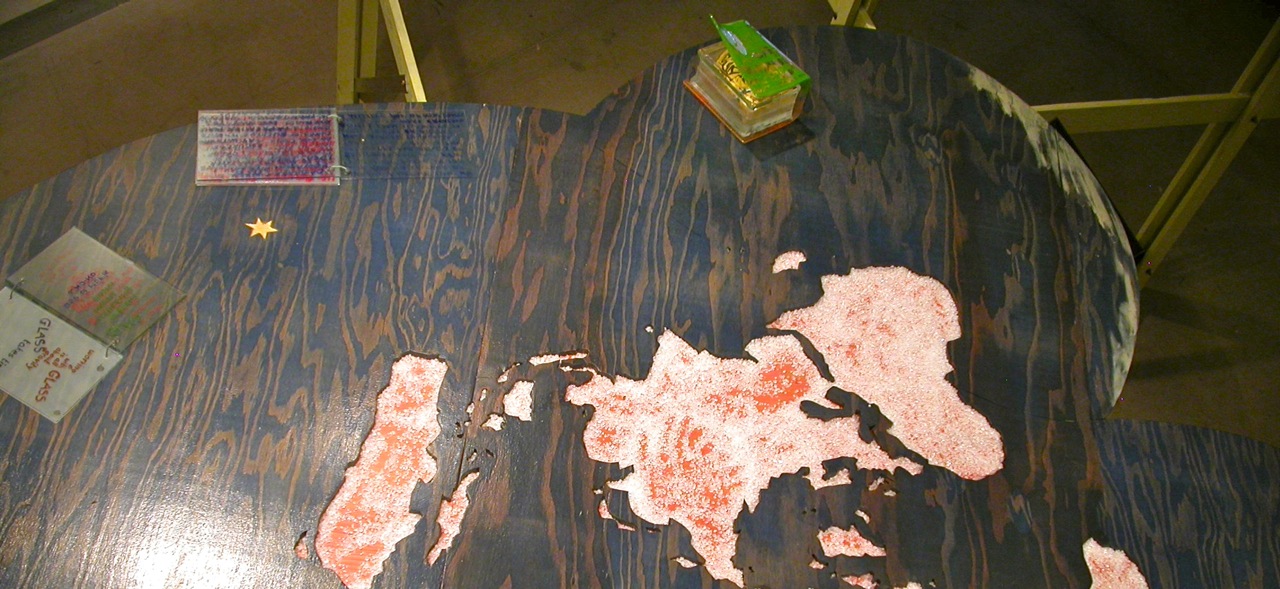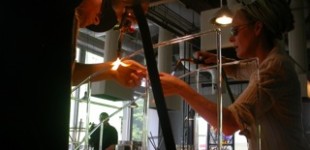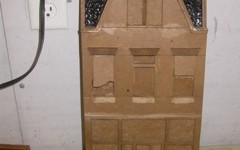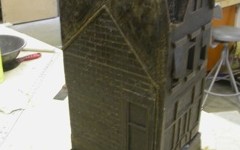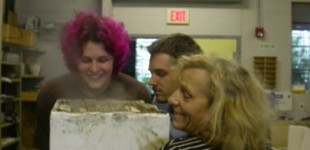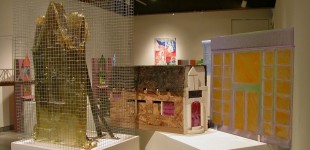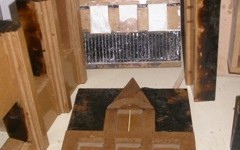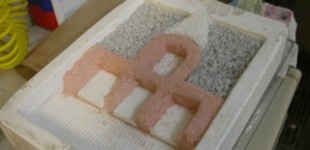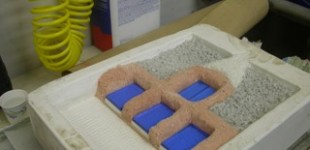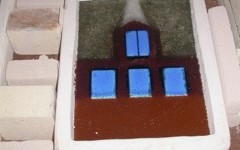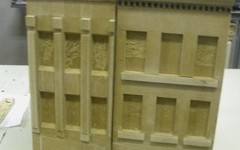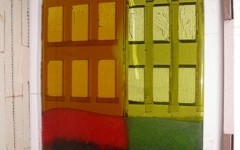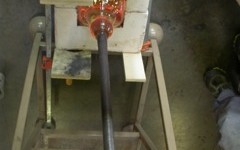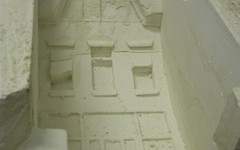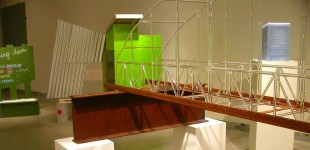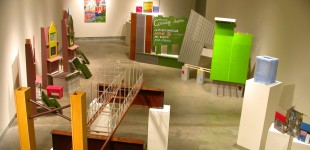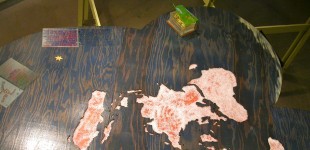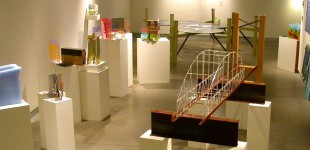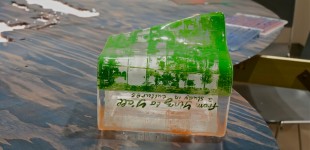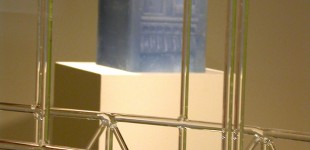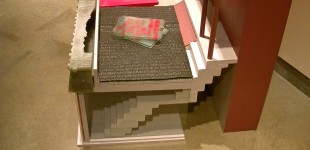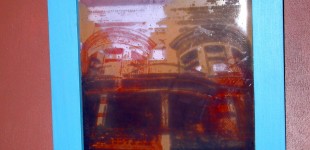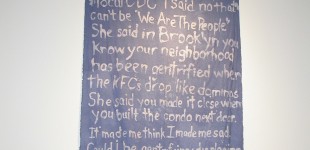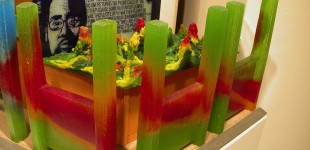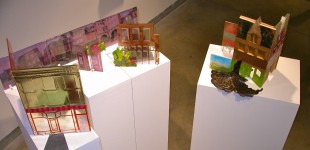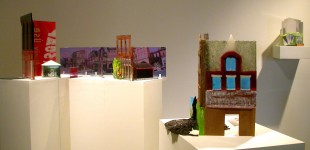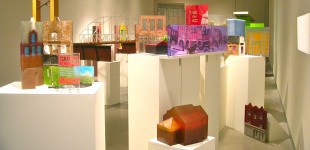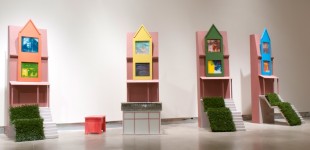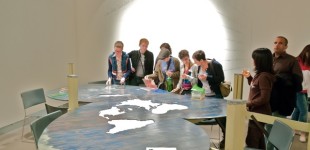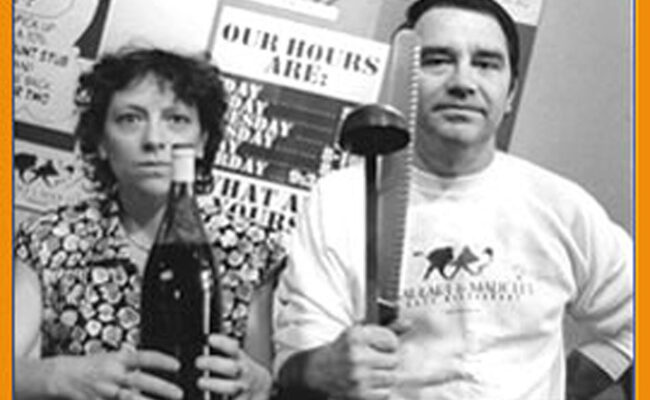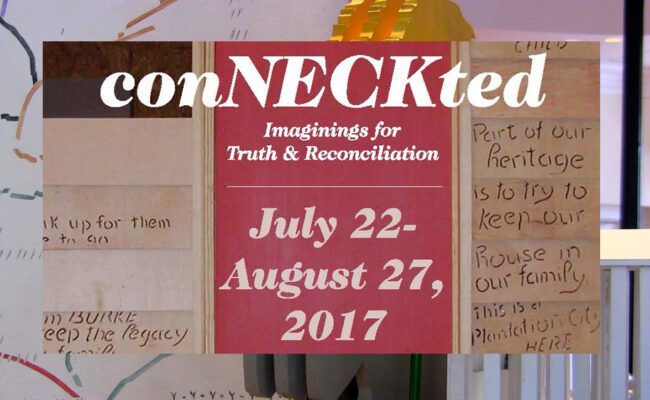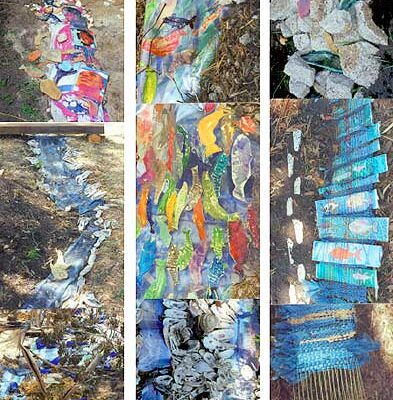“The concept of The Idea Furnace grew out of a recent artist residency at the glass center with Gwylene Gallimard and Jean Marie Mauclet. They had big architectural ideas for their exhibition “Ten More Years on Penn” but had no glass experience. They worked with artists at the glass center and challenged them to create structures that had never been created before. The result was a 7-foot glass bridge.” Jason Forck
The Idea Furnace is an experimental design program to connect non-glass artists with glass artists and encourages exploration in other art forms.
Jason Forck, the glass center’s youth education coordinator, created the program to bridge the gap between glass and other art and design media. “We want to educate young artists about glass, give them access to the material and help them advance their ideas,” he said.
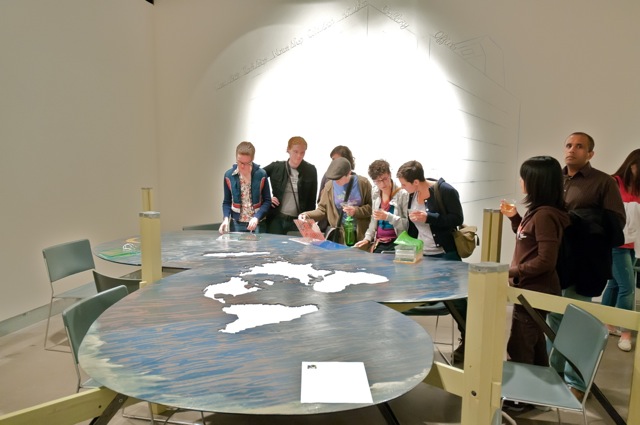
“Ten More Years on Penn” illustrates how artistic intervention has changed the Penn Avenue corridor and what the future might look like. Gwylene Gallimard and Jean Marie Mauclet met with community members from the neighborhoods to examine the changes that have taken place over the years and understand the effects on the people and surrounding area. This installation shows that Penn Avenue is a vital link between the neighborhoods and that the arts are an economic driver for community revitalization.
Gallimard and Mauclet, who reside in South Carolina, have been working together for over 30 years in France and the U.S. They are mixed media artists specializing in art installations and community work. Cast resin is one of their latest endeavors. They had never worked in glass until their residency at PGC, which started August 1. The residency and exhibition are part of PGC’s Bridge Artist program, which allows non-glass artists to be connected with master glass artists to help them discover how to realize their vision in glass. It connects glass artists with the world outside glass art as well. During the Bridge residency, artists learn all they can about glass. In this case, the installation combines both two- and three-dimensional works including cast resin, cast glass, flame work, graphic and photography works on glass as well as wood, steel, canvas and fabric elements.
While experimenting in glass at PGC, Gallimard and Mauclet discovered how much glass differs from resin and other materials. “Although it is highly technical, there is a ‘humanity’ to glass, a malleability, a physicality which makes us want to re-read history through the history of glass. When you see an artist work at the torch or blow glass, the material, ‘glass’ is an extension of his body and his body is never the only body around. It takes teamwork to do glass work. Of course, art is a community builder and glass may be the leader of the pack,” they said.
Working with the Community to Create the Installation
Gallimard and Mauclet’s previous installations have been informed by a community-based approach to art derived through research, community interaction and oral history. They met with residents from both geographic sides of Penn Avenue including Garfield and Friendship and interviewed key stakeholders in the community.
“Gentrification has taken on a new meaning for us in Pittsburgh. We’ve worked extensively in the southern part of the U.S. where gentrification means displacement, destruction and building big, expensive box structures. We expected much of the same here, but we were surprised. We found the Penn Avenue corridor to be very welcoming and friendly. We felt very comfortable with the blend of old and contemporary architecture. There are sidewalks and a two-lane road with bike lanes. It’s human scale. On Penn Avenue, gentrification is a gentle process in which neighborhoods are growing in quality, value and people,” they said.
Once the exhibition opens, the conversation doesn’t stop there. “It’s just beginning,” says Mauclet. “We are thinking differently about what art spaces are and we want visitors to the Hodge Gallery to think differently too. We invite people to come and sit at the table. Literally, there is an open table in the gallery. Come and talk about your neighborhoods. Look, think and meet with your community,” he said.
From their studies in art, art history and the philosophy of art, Gallimard and Mauclet recall a thought from William Morris, a founder of the Arts and Crafts Movement, “Art is the expression of man’s joy in work.” This quote could be the foundation for the “Ten More Years on Penn” effort. It gives sense to the existence of Pittsburgh Glass Center, roots to its Bridge Artist program and the success of Penn Avenue’s revival through the arts.
“When we walked on Penn Avenue during ‘Unblurred’, we understood how far the revival still had to go but also that only the arts could have brought it this far. Art is the constant pioneer, the constant designer, the constant worker and the patient gatherer. We see art all along Penn Avenue every day and how people appreciate their neighborhood. It’s uplifting,” they said.
“Ten More Years on Penn” is supported in part by The Benter Foundation. Additonal funding was provided to the artists by Alternate Roots.
Special Thanks
The artists Gywlene Gallimard and Jean Marie Mauclet are especially appreciative of the people who helped them make this exhibition a reality. Glass pieces were created with the help of Becky Smith, Melissa Fitzgerald, Brian Engel and Jessica Amarnek. Olivier Rollin helped with the installation. Fabric work was done by David Feingold, Michele Morris, Christine Bethea and Ron Glover. Special thanks to Robert Mickelsen and Micah Evans. Additional help came from Ashley McFarland, the tech apprentices and staff at PGC. Steel beams were a generous donation by Glenshaw Steel.
Photographs by Gwylene Gallimard and Nathan J. Shaulis

